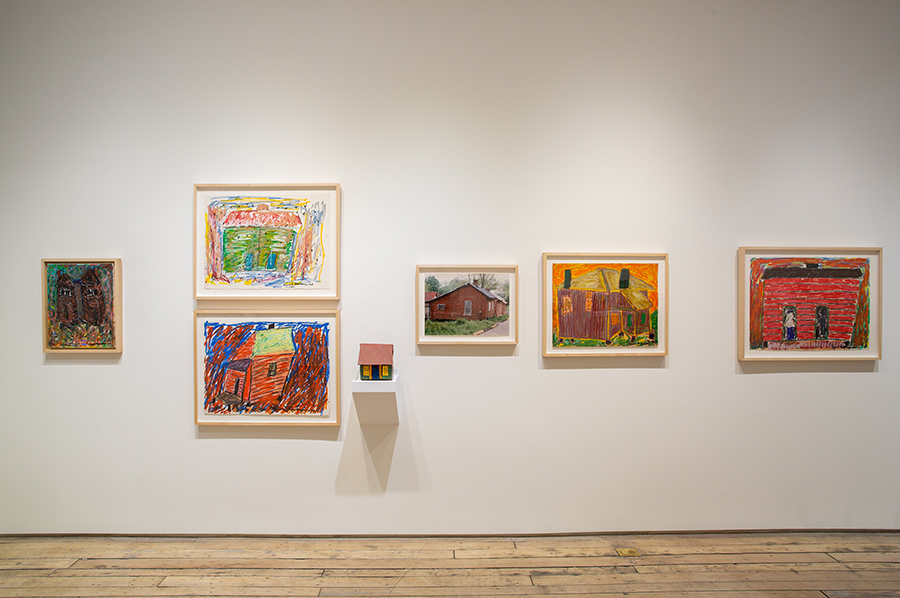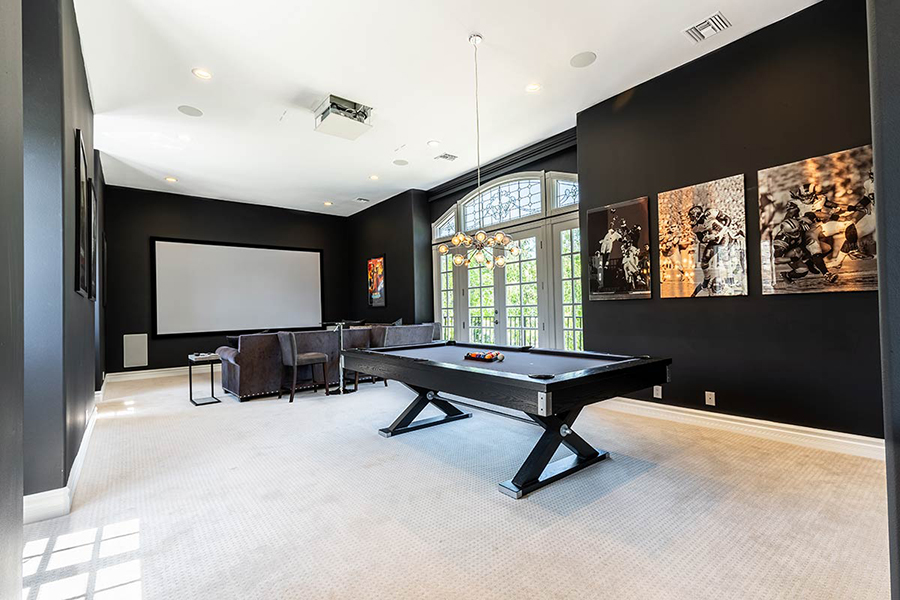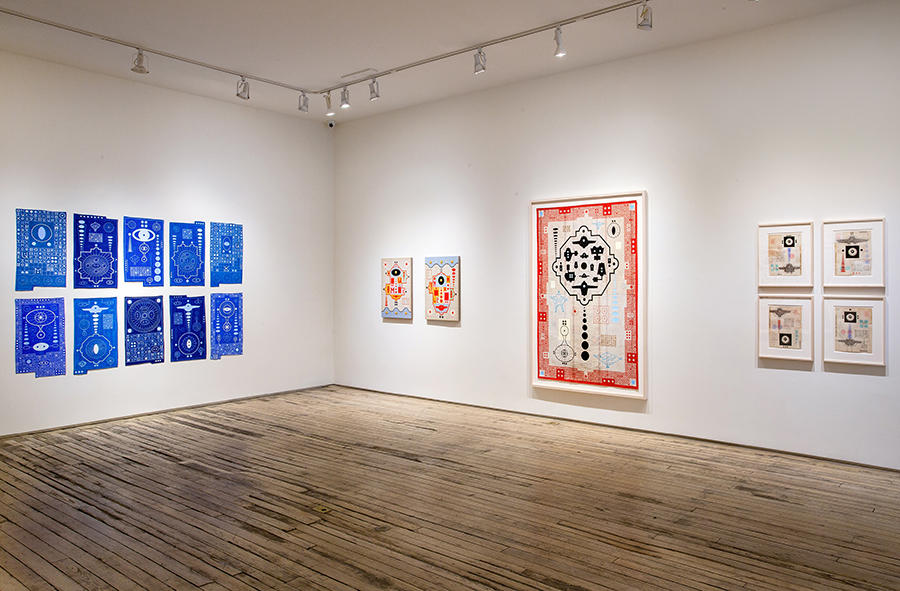TOP TIPS FROM A GALLERY DIRECTOR, MUSEUM STYLIST, INTERIOR DESIGNER AND MORE
By Barbara Tunick
The art of hanging art is a lot like starting with a blank canvas. You have to decide on color, texture, definition and, perhaps most important, which emotions you’re hoping to evoke and what story you’re trying to tell. Indeed, when you’re hanging art, your walls become the canvas and your collection becomes your palette.
Deciding where and how to hang your artwork can seem daunting. In the wrong place, a prized painting can get overlooked or, worse, damaged. So how do you determine where to hang your most cherished pieces? To find out, we asked five experts for their do’s and don’ts of hanging art.
Enlarge

Tell a Story
“When you’re looking to select the artwork in a room, you want to choose pieces that will elevate the overall mood and feeling of the space,” says Jennifer Meddy, Principal Designer and Founder at New York-based Drayer Interiors. “Art is incredibly personal. You want to choose artwork that evokes an emotion while supporting the identity of the room. For instance, ask yourself if you want the room to feel light and airy, cozy and intimate, or do you want a more sexy vibe?”
The most important point to consider, she says, is the relationship of the art to the room and to surrounding pieces. “You can place an oil painting next to a print as long as there’s a relationship,” says the designer. “Shapes and sizes are less important than the story you want to tell. If all the pieces are similar except for their height and width – say they’re all black and white or sepia in the same frames – and you hang them all in a row, it’ll exude a sense of relaxation and harmony. Your brain doesn’t have to work hard looking from one piece to the next. On the other hand, if you have a gallery wall with all different shapes and sizes and types of art, it creates an energy.”
Aurélie Bernard Wortsman, Director of the Andrew Edlin Gallery in New York City, agrees that “curating your own story” should be the goal in hanging your art collection. “Hanging your art is very subjective. There is no wrong or right way to do it,” she says. “You can definitely mix time periods, genres and media.”
Not only can you mix and match paintings, Walter A. Ramirez, Consignment Director of Urban & Contemporary Art at Heritage Auctions, absolutely encourages it. “Hanging a portrait next to an abstract, next to a landscape looks great,” he says. “Placing an 18th- or 19th-century painting next to something contemporary makes each one pop.”
Enlarge

Everything in Its Place
Before hammering a hook into your wall, make sure the placement is just the way you want it, Meddy advises. She says one of the easiest ways is to arrange your artwork on the floor first, then cut brown kraft paper to size and hang the paper on the wall with blue painter’s tape to make sure you approve of the layout. If, however, you don’t feel like physically arranging and rearranging, cutting and taping, Wortsman has another suggestion: “Photoshop and Illustrator are pretty straightforward and easy to use and can save you from putting a lot of unnecessary holes in your wall.”
Adam Williams, Heritage Auctions’ Director of Operations, Fine & Decorative Art has a pretty simple recipe for art-hanging success. “All you need is a tape measure, a hammer and a level,” he says, adding that OOK Picture Hangers are his go-to hardware. “If the painting is oversized or heavier, err on the side of caution and use OOK hooks that can hold more weight.” Although Williams says it’s fine to hang paintings with a wire backing if the wire is in good condition, for larger works, he suggests using two D-rings on the back of the piece. “The benefit of using D-rings is that the painting hangs flat against the wall, but you can also achieve this by putting a couple of little wads of museum putty on the inside bottom corners,” he says.
Enlarge

Just the Right Height
One of the trickiest parts about hanging art is choosing the correct height. The general rule of thumb, Wortsman says, is to hang a painting so its midpoint is between 56 and 62 inches from the floor. “That’s what we do in the gallery, but when you’re hanging art in your home, think about the placement of your furniture and the size of the work,” she advises.
“You want to be able to see your artwork comfortably. If you and your family are on the shorter side, hang your paintings on the lower end,” Meddy adds. “If you’re hanging something over a sofa or a console table, you want to leave about four to six inches from the bottom of the painting to the top of the furniture. And make sure you take into consideration if you have oversize vases or urns. You don’t want your painting swallowed up by massive pieces.”
Sometimes, though, hanging art on a wall might not be the best course of action. “My North Star is how can I best enjoy the piece? In order to do that, you have to consider the scale of the furniture and the scale of the room,” Meddy notes. “For instance, I love using art in a nontraditional way. I have a really large unframed canvas that is sitting on my buffet. Art is so personal, and every piece is so different that it may not serve its purpose to be hung on a wall.”
Enlarge

Read the Room
When deciding where to hang your art, the consensus is to take stock of everything that’s in the room, including window treatments, radiators, windows, light fixtures and even light switches. “You need to consider every aspect of the room, such as the color and height of the walls and the layout of the entire space,” says art consultant Buster Seccia, a visual stylist for The Metropolitan Museum of Art, and Art Handler and Fine Art Installer for the Lincoln Center Galleries. “Whenever I work for a private client, I ask to see their body of work and to show me their apartment. It’s not only important that the art tell a story, but that the placement flows from one area to the next.”
“You need to determine if there is something else in the room that may visually take up the space,” Meddy adds. “If a chandelier is the statement piece of the room, you don’t want the art to get lost when you turn it on and it casts a shadow. You need to consider how far and wide that shadow is, as well as how much light is dispersed when it hits your painting. You’ll want to evaluate the room not only during the day, but at night as well to make sure the shadow is not smack dab in the middle of your artwork.”
Enlarge

Light the Way
“Lighting makes all the difference to art,” Williams says, “especially to pieces that have a darker color palette. Once you hang your artwork, you need to adjust the lighting in the room or invest in some kind of lighting aspect such as track lighting or individual painting lights.”
Meddy notes that proper lighting can help evoke the emotion and mood of the artwork. “Like art, lighting is very personal. You don’t want it to get in the way, but you have to make sure that there is enough light on your paintings,” she says. “If you only have floor lamps, you probably need secondary support lights such as task lighting, sconces or track lighting. I usually use overhead lighting, but in certain circumstances, you can light from below.”
Enlarge

Beware the Danger Zones
“One of the biggest mistakes people make when hanging their art is that they hang it in an unsafe location,” Williams says, noting that one of the most common and precarious places to hang art is above the fireplace. “People don’t realize the amount of soot and smoke that comes out of a fireplace, and all of that will end up on your painting if you’re not careful.” That doesn’t mean you can’t hang your favorite piece there; it just means you need to take extra precautions. “When getting your paintings framed, make sure you choose museum-quality, UV-filtered, anti-glare glass or acrylic,” he says.
While proper lighting is essential for fully appreciating art, too much light can wreak havoc on your collection. “It’s best not to hang valuable artwork too close to a window or where it can be damaged by harsh sunlight,” Williams says.
The same holds true for excessive heat and humidity. “Don’t hang your Picasso in the bathroom!” Seccia warns. Yes, it’s fine to hang art in the loo, or in the kitchen, but choose your pieces wisely. “Personally, I like to hang art everywhere,” he says, “but you have to be cognizant of your surroundings. Choose less valuable pieces and those that won’t be easily damaged by water, steam or humidity.”
And, finally, while it’s imperative to be careful when hanging your artwork, Williams emphasizes that following the rules of art-hanging shouldn’t overshadow the joy your collection can bring: “The most important thing to remember is that at the end of the day, if what you see on your walls makes you happy, that’s all that matters.”
BARBARA TUNICK is a contributor to Intelligent Collector.

